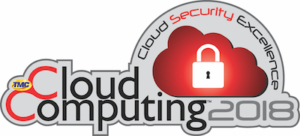In early August, at MeriTalk’s Cyber Security Brainstorm, Paul Beckman, chief information security officer (CISO) at the Department of Homeland Security (DHS), said that his biggest new priorities are:
- Increasing use of software-defined networking (SDN)
- Adopting a zero-trust model
- Optimizing DHS’ security operations centers (SOC)
He added that the ability to leverage micro segmentation in cloud or SDNs is an efficient way to provide network data security services.
Which is true to an extent.
Unfortunately, Mr. Beckman puts too much trust in SDN security. If that word “software” does not concern you, then you are not thinking about the problem hard enough. Humans make and deploy software and humans make mistakes, even in something called “software-defined.” They often don’t see what’s exposed as they build out their architecture. They may have intended to have something segmented and not realize it isn’t.
SDNs grow and change quickly. An equally agile modeling solution can ensure that any mistakes are caught and fixed rapidly. There can easily be millions of rules to check as workloads spin up and down too fast for any human to keep up. RedSeal will validate all your security rules over time to ensure that configuration drift doesn’t cause segmentation violations.
Agencies can create risks, too, by making multiple changes over time without comprehending the combined effect those changes have on end-to-end security. This problem is exacerbated by SDNs because of the ease and speed of change they offer. To reduce the risks and realize the true power of SDNs, agile change control should be part of your approval process. This will allow you to model changes at machine speed to see exactly what effect a change will have on end-to-end security.
Added to architecture, updating and workflow issues, is the fact that most SDNs exist in hybrid data center environments, connected to other SDNs, public clouds and physical assets. RedSeal’s model of your network includes all your environments, so you can see access between and within each one. While I agree that SDNs are an improvement on the earlier way of providing security services, they are not a silver bullet.
Mr. Beckman also said, “One of the things that I think we are, as an IT organization, going to be evolving to, is that zero-trust model. Traditionally the perimeter was your primary means of defense, but once you got into the squishy center, you were generally a trusted entity. That needs to go away.”
With zero trust, he said that you need to authenticate everything a user is trying to access inside the perimeter. It’s a great idea for any organization to trust no one on the inside of a network and make them prove they’re authorized to be there. But what happens when credentials are compromised? It is harder to do today, after implementation of two factor authentication procedures and password managers, but not impossible. Hackers still find a way.
Lastly, Mr. Beckman wants to consolidate 16 independent SOCs into four or five centers operating in a “SOC-as-a-service” format. These kinds of consolidation efforts have happened before. The government has put a lot of effort into merging SOCs, only to have them split apart again due to performance issues or mission requirements.
What is new and admirable is a focus on grading the performance of each individual SOC. Identifying poor performers and merging them with high-scoring SOCs seems like a logical way to take advantage of the limited numbers of highly skilled security professionals and improve outcomes. Again, this sounds good in theory. We will see how it works in real life environments.
For more information about how RedSeal meets the DHS’s highest priorities this year, visit our website at: www.redseal.net/government.

 TMC’s Cloud Computing Magazine has named RedSeal as a winner of their 2018 Cloud Computing Security Excellence Awards. The awards honor solutions in two categories: those that most effectively leverage cloud platforms to deliver network security, and those providing security for cloud applications.
TMC’s Cloud Computing Magazine has named RedSeal as a winner of their 2018 Cloud Computing Security Excellence Awards. The awards honor solutions in two categories: those that most effectively leverage cloud platforms to deliver network security, and those providing security for cloud applications.